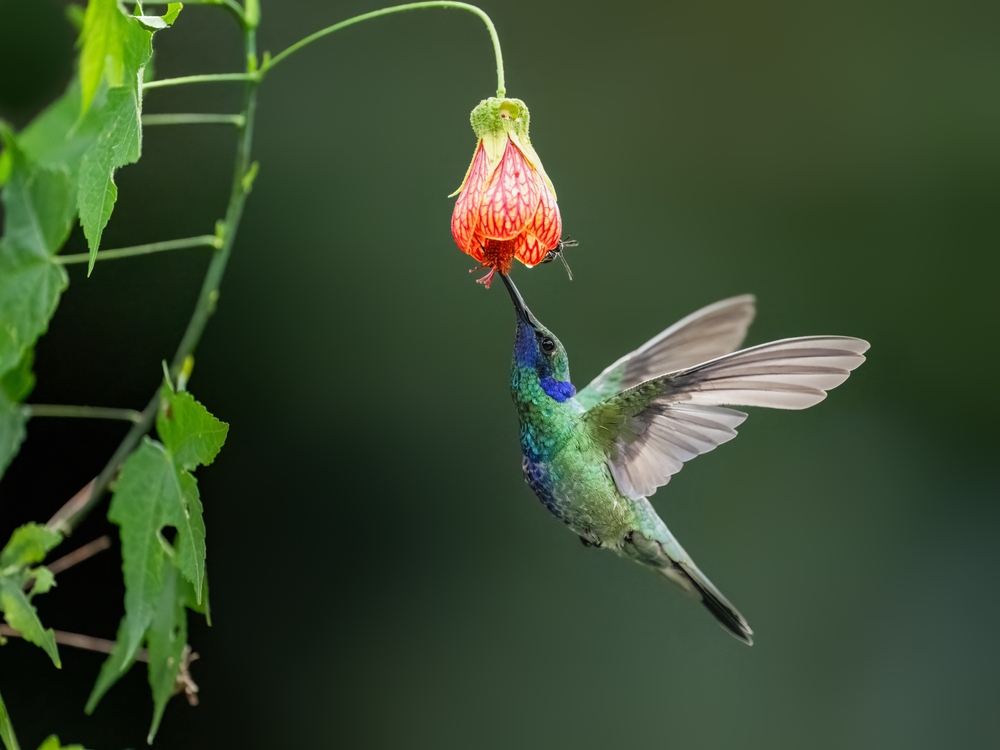Avian Agility: The Remarkable World of Hummingbird Acrobatics
Prepare to be amazed by the aerial prowess of nature's tiniest aviators. Hummingbirds, with their iridescent plumage and lightning-fast wings, captivate observers worldwide. But beyond their dazzling appearance lies a world of astonishing acrobatic feats that push the boundaries of avian flight. Join us as we explore the fascinating realm of hummingbird aerodynamics, uncovering the secrets behind their incredible maneuvers and the cutting-edge research revealing new insights into these diminutive daredevils.

Their wing beats are incredibly rapid, ranging from 12 to 80 flaps per second, depending on the species. This high-frequency movement creates a continuous flow of air around their wings, providing constant lift. The hummingbird’s lightweight skeleton and powerful breast muscles further contribute to their aerial agility, allowing them to perform sudden direction changes and intricate flight patterns with ease.
Hovering: The Hummingbird’s Signature Move
Hovering is perhaps the most iconic of hummingbird abilities. This seemingly effortless suspension in mid-air is actually an intricate dance of precise muscle control and energy expenditure. When hovering, hummingbirds maintain a near-vertical body position, with their wings moving in a horizontal plane. This orientation allows them to generate both lift and thrust simultaneously, keeping them perfectly balanced in the air.
Recent studies have revealed that hummingbirds can adjust their hovering technique based on air density and temperature. At higher altitudes, where the air is thinner, they increase their wing beat frequency and adjust the angle of their wings to compensate for reduced lift. This adaptability enables hummingbirds to thrive in diverse environments, from sea level to high mountain ranges.
The Art of Aerial Combat
Hummingbirds may be small, but they’re fiercely territorial. Male hummingbirds engage in spectacular aerial battles to defend their feeding territories. These high-speed dogfights showcase the full range of their acrobatic abilities. Combatants perform elaborate dives, loops, and rapid direction changes, often reaching speeds of up to 60 miles per hour.
During these aerial duels, hummingbirds utilize a combination of agility and endurance. They execute precise maneuvers to outmaneuver opponents while conserving energy for prolonged engagements. Scientists have observed that successful fighters often employ unpredictable flight patterns, making it difficult for rivals to anticipate their next move.
Nectar Extraction: A Delicate Balance
Feeding on nectar requires a delicate balance of hovering and precise movements. Hummingbirds have evolved long, specialized beaks and extendable tongues to reach deep into flowers. While feeding, they must maintain a stable position in the air, often in the face of wind or unstable perches.
Recent high-speed video analysis has revealed the intricate mechanics of hummingbird feeding. Their tongues act like tiny pumps, trapping nectar in grooves and drawing it up into their beaks. This process occurs in milliseconds, with multiple licks per second. The hummingbird’s ability to hover steadily while performing these rapid tongue movements is a testament to their exceptional muscle control and spatial awareness.
Migration: Long-Distance Acrobatics
Perhaps the most impressive display of hummingbird flight comes during their annual migrations. Some species, like the Ruby-throated Hummingbird, undertake non-stop flights across the Gulf of Mexico, covering over 500 miles in a single journey. These marathon flights push the limits of their physical endurance and navigational abilities.
During migration, hummingbirds enter a state of torpor to conserve energy. They can reduce their metabolic rate by up to 95%, allowing them to survive long periods without feeding. Upon reaching their destination, they quickly resume their high-energy lifestyle, demonstrating remarkable physiological adaptability.
Biomimicry: Inspiring Future Flight Technology
The unique flight capabilities of hummingbirds have not gone unnoticed by engineers and roboticists. Their aerial prowess is inspiring a new generation of micro air vehicles (MAVs) designed for applications ranging from search and rescue to environmental monitoring.
Researchers are developing tiny flying robots that mimic hummingbird wing movements and hovering abilities. These bio-inspired drones aim to replicate the maneuverability and efficiency of hummingbird flight, potentially revolutionizing fields such as disaster response and wildlife conservation.
Nature’s Aerial Marvels
Hummingbirds stand as a testament to the wonders of evolution and the incredible diversity of flight adaptations in the natural world. Their acrobatic abilities continue to astound scientists and bird enthusiasts alike, pushing the boundaries of what we thought possible in avian flight. As research techniques advance, we can expect to uncover even more secrets about these remarkable creatures, further cementing their status as nature’s premier aerial acrobats.
From their physics-defying hovering to their epic migrations, hummingbirds offer a captivating glimpse into the marvels of animal locomotion. Their influence extends beyond the realm of biology, inspiring technological innovations that may one day transform how we explore and interact with our world. As we continue to study and appreciate these tiny aviators, we’re reminded of the endless wonders that nature has to offer and the valuable lessons we can learn from even the smallest of Earth’s inhabitants.




